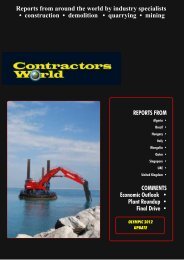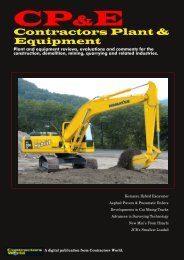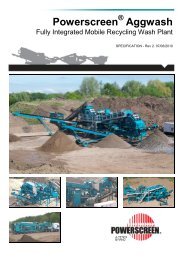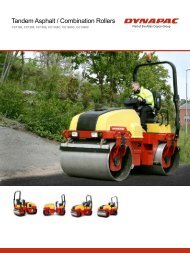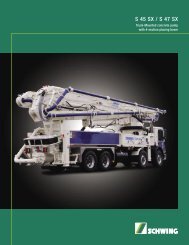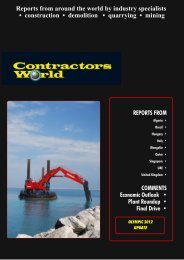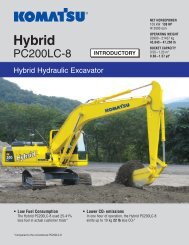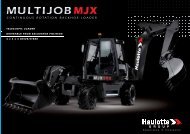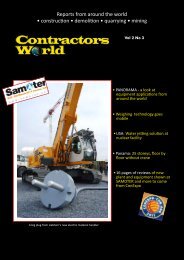download pdf version - Contractors World
download pdf version - Contractors World
download pdf version - Contractors World
You also want an ePaper? Increase the reach of your titles
YUMPU automatically turns print PDFs into web optimized ePapers that Google loves.
Formwork & FalseworkDoka planned a suspended platform adjustable in threedimensions to enable the workers to handle the stay cablesat the suspension tower’s overhanging face.adaptable formwork solution that would dispense withtime-consuming re-rigging was obviously needed.Doka supplied the solution using SKE100 automaticclimbing formwork with telescopically adjustableworking platforms.Doka site foreman Juergen Poechacker was on theground to make sure that the formwork solution wascorrectly assembled: “A great deal of time was savedon site because the beam formwork was delivered preassembledby Doka España. The scaffolding and theformwork were ready to go within a very short timeafter delivery to site.A complication came in the 6th lift position, wherethere was a difficult transition in the columndimensions. Once this was completed, the crew wasable to maintain an impressive 36-hour cycle forforming.”The system used was the SKE100 automatic climbing formwork,which has a high load-bearing capacity of 10 metric tons per bracket,enabling it to carry multiple platform levels. The different levels mean thatthe various operations of placing the reinforcement and handling theformwork and casting the concrete can progress separately.On the Talavera suspension-tower, the lead part of the crew handlesthe positioning of the rebar cages (pre-assembled on the ground)together with the steel boxes for tensioning the stay cables in the nextconcreting section. At the same time another part of the crew is followingup by adapting the formwork to the reduced cross-section.The telescopic function enables the platforms to be adapted to thechange in cross-section while dispensing with the need for complete rerigging.Each platform section runs on rollers on steel beams and can beslotted inside the next larger section. The Top 50 beam-formworkassemblies can be used on a number of concreting sections before theyhave to be shortened and this reusability saves even more valuableworking time.Safety is top prioritySafety is a top-priority issue on site and the process of climbing theSKE100 minimises risks. The system runs for the most part on rails,because the climbers remain anchored to the concrete structure at alltimes.In addition, nets are stretched to enclose all the working levels. Themain working platform on level 0 is fully enclosed by trapezoidal metalsheeting up to a height of 2 m. Apart from the sense of security it gives,the metal sheeting also provides a measure of protection against windand weather and helps prevent the risk of small items being dropped offthe work surface.Doka supplied SKE100 automatic climbingformwork for the pylon. It has a high loadbearingcapacity of 10 t. per bracket, so itcan carry multiple platform levels. The placingof reinforcement and formwork handling canprogress separately.Telescopic suspended platform for working with the stay cablesFormwork planning had to allow for installation of the stay cables, because a working platform on the outside face wasneeded for access. On the overhanging narrow face of the tower, the sides are stepped in from the 12th concretingsection up, forming an inside step at this level.Openings for the stay cables are located in this back-step zone. Access to these apertures is necessary, so Dokaplanned a suspended platform that can be adjusted both vertically and horizontally. The positioning of the platform at theinside step has to be accurate to within centimetres, so the platform also extends telescopically into the back cut.<strong>Contractors</strong> <strong>World</strong> Vol 1 No 9Page 21



